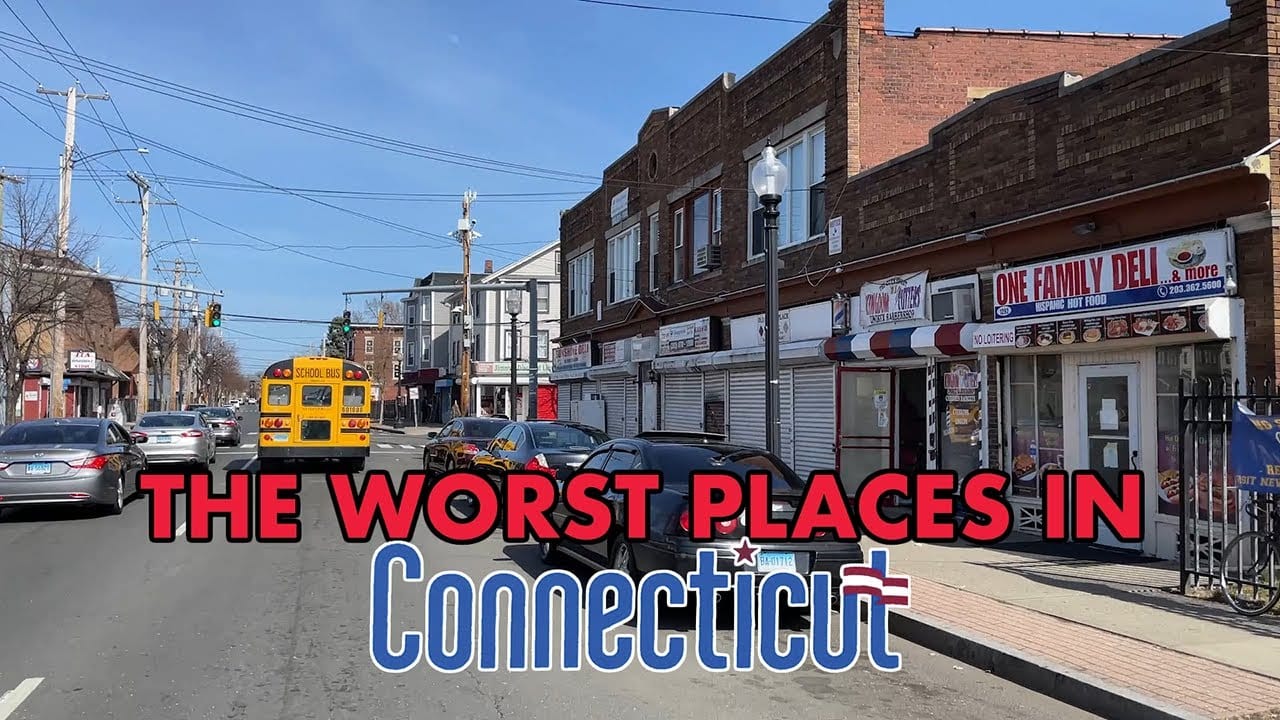Connecticut, with its charming towns, picturesque coastlines, and proximity to major metropolitan areas, often appears as an idyllic place to live. However, like any state, it harbors less desirable areas where crime, poverty, and a lack of opportunities create challenging living conditions. This article delves into the five worst places to live in Connecticut, examining the factors that contribute to their low rankings.
Methodology
This article considers a mix of quantitative and qualitative factors to determine the worst places to live in Connecticut. These include:
- Crime Statistics: Analysis of violent and property crime rates from sources like the FBI Uniform Crime Report and local police departments.
- Economic Indicators: Assessment of poverty rates, unemployment levels, and median household income obtained from the U.S. Census Bureau.
- Quality of Life: Evaluation of factors like school performance, infrastructure quality, and access to amenities.
- Resident Perceptions: Incorporation of insights from online forums and news reports to gauge residents’ experiences.
5. Waterbury
- High Crime Rates: Waterbury consistently grapples with higher crime rates than the state and national averages. Property crimes, such as theft and burglary, are particularly prevalent.
- Economic Decline: The city has faced the loss of manufacturing jobs, leading to elevated unemployment and poverty levels.
- Limited Opportunities: The economic struggles in Waterbury translate to a lack of well-paying jobs and limited prospects for residents.
4. Bridgeport
- Poverty and Crime: Bridgeport is plagued by high poverty rates and a significant crime problem. Violent crime rates are concerningly high, impacting the safety of residents.
- Declining Infrastructure: Many parts of Bridgeport exhibit signs of aging infrastructure, with deteriorating roads and buildings contributing to a sense of urban blight.
- Educational Challenges: Bridgeport’s public school system faces challenges with underfunded schools and lower academic achievement compared to other districts in the state.
3. New Haven
- Income Disparity: New Haven exhibits a stark income divide. While home to the prestigious Yale University, many residents struggle with poverty.
- Safety Concerns: Certain sections of New Haven experience elevated crime rates, particularly violent offenses, affecting residents’ sense of security.
- Housing Costs: Despite its challenges, New Haven experiences rising housing costs, putting a strain on residents, especially those with lower incomes.
2. Hartford
- Persistent Poverty: Hartford struggles with deeply entrenched poverty impacting a significant portion of its population.
- High Violent Crime Rates: The city’s violent crime rates are consistently among the highest in the state, creating a climate of fear and insecurity.
- Struggling Schools: Hartford’s public schools face numerous challenges, including limited resources and lower academic performance compared to other Connecticut schools.
1. New Britain
- Stagnant Economy: New Britain suffers from a weak economy offering few high-paying job opportunities for its residents.
- Property Crime and Safety: The city experiences high rates of property crime, with theft and burglaries being significant concerns for residents.
- Infrastructure Issues: Aging infrastructure in New Britain is evident in deteriorating roads, public buildings, and limited public amenities.
Important Considerations
- Neighborhood Variations: Within these cities, there exist variations between neighborhoods. Some areas may be safer, more livable, and offer a better quality of life than others.
- Subjectivity: The perception of what constitutes a “worst” place to live is partly subjective, with individuals placing different weights on various factors.
- Potential for Improvement: While these cities face substantial challenges, it’s important to recognize that they also possess strengths and the potential for positive change.
Conclusion
Identifying the worst places to live in Connecticut highlights some of the persistent challenges the state faces. Addressing issues such as crime, poverty, and economic disparities is essential to improve the quality of life for residents in these cities.
It’s crucial to remember that these places are not solely defined by their problems. Within each city, there exist communities of resilient people, dedicated organizations, and initiatives striving for positive change. While choosing a place to live involves careful consideration of potential drawbacks, it’s equally important to recognize the potential of these cities and the efforts underway to create more prosperous and livable communities.
Sources
- FBI Uniform Crime Report: https://ucr.fbi.gov/
- U.S. Census Bureau: https://www.census.gov/
- Connecticut State Department of Education: https://portal.ct.gov/SDE
- Local news sources:
- Hartford Courant: https://www.courant.com/
- New Haven Register: https://www.nhregister.com/
- Connecticut Post (Bridgeport): https://www.ctpost.com/
- Republican-American (Waterbury): https://www.rep-am.com/
- New Britain Herald: https://www.newbritainherald.com/



